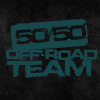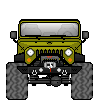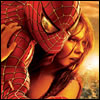Convoy Control
#1

Posted 14 March 2006 - 07:42 PM
MVPA
Convoy Control
* This page outlines proper procedures for conducting safe convoys of military vehicles. *
MID-SOUTH CHAPTER MVPA CONVOY PLANNING AND PROCEDURES
By David Doyle and Ron Grasso
These procedures have been developed with one factor of paramount importance .... SAFETY, both for our drivers and passengers as well as other motorists. These procedures are based upon the US military's Transportation Reference Data (FM55-15), Manual for Wheeled Vehicle Driver (FM21-305), the 3rd Battalion 7th Infantry Convoy Checklist and our years of experience. We hope that this article will help our trips go even more smoothly in the future and will expand the role of each participant. Each person plays an important part in the groups safe and timely travel.
PLANNING
The first step in a safe convoy is careful and thorough planning. To begin planning a convoy, a few key pieces of information are needed. Among these are:
Time the event host needs the vehicles to arrive.
Number of vehicles expected for convoy.
Size (weight, height, width) of largest vehicle expected.
Cruising speeds of the various vehicles.
Un-refueled range of the various vehicles.
Among the most crucial parts of the planning is route selection. There are many factors to consider when selecting a route. It is very desirable to travel on four-lane divided highways if possible, although the high speeds of Interstate Highways should be avoided. Plan the route such that as many turns on or off highways as possible are right turns.
Arrange the route such that most turns, especially left turns, are at controlled intersections. Congested city streets with many stops and starts should also be avoided. When planning rest stops make sure that there are adequate parking facilities for the number and size of vehicles you anticipate. Be sure that any awnings, canopies, overpasses and bridges you will encounter are large enough for the vehicles expected. These factors may require a less than direct route.
When planning fuel stops make sure that the facility you choose has available both gasoline and diesel, and is able to refuel several vehicles at once. This will avoid losing time waiting while others fuel. When planning for meal stops be sure that there is sufficient secure parking for all the vehicles.
Beginning with the time the event host wants to have the vehicles in place, subtract 10 minutes to position the first 5 wheeled vehicles (and chairs, awnings, signs, etc.), subtract an additional 1 minute for each additional vehicle above the first 5. The result will be the time to arrive on site.
From there the travel time can be calculated. For most trips it is safe to estimate a travel rate of 10 miles each 15 minutes on the road. This allows for variances due to traffic. It is extremely desirable to schedule a 15 minute stop once every hour to hour and a half to stretch your legs, check over the vehicles, and have a snack. If it is necessary to stop for a meal, allow at least 45 minutes for this.
You can now calculate the total elapsed time for the trip. To the total time it is necessary to add 10 minutes per hour as a safety factor to allow for late arrivals and minor mechanical or traffic problems.
Now we have a theoretical departure time. To this subtract an additional 15 minutes to allow the drivers to check the oil, water, tire pressures, and to start and warm their engines.
Now that the departure time has been calculated, the next step is to actually drive the route in advance. Leave at the scheduled time, preferably on the same day of the week that the convoy is planned for, drive at convoy speed and note any problems with traffic (construction, schools, shift changes, etc.). Also note trouble areas such as no passing zones, soft or no shoulders, etc. Make any changes in the convoy route or schedule to compensate for these problems, and remember to brief the drivers on these problem areas prior to departure. Even if you are familiar with the route, it is best to make a special trip noting the above factors. It is best to plan trips so that all travel is during daylight hours.
Once the convoy plans have been finalized, disseminate this information to those people who will be participating in the convoy.
PROCEDURE
Before departure all drivers should personally check oil, water, lights and tires on the vehicle that they are driving. The preferred order of march is to have the biggest vehicles in the lead progressing to the smallest. There are a number of reasons for this.
First of all, in the event of inattention or malfunction, a Jeep is unlikely to run over a CCKW, but the reverse is a real possibility. Secondly, the lead vehicles of a convoy tend to travel at a more constant speed than the following vehicles, and the smaller vehicles tend to be more nimble and hence better able to cope with this than the reverse. Similarly, the bigger vehicles tend to be the slowest (especially in hilly terrain), and thus set the pace of the convoy.
An exception to this policy involves visibility. The lead vehicle needs to have a good field of vision, thus, if, for example, the heaviest vehicle in the convoy is a Ferret, it would nevertheless be better for something else to lead due to the restricted driver visibility in the armor. It is preferable for all vehicles in the convoy to travel with the headlights on at all times as this helps the convoy leader to keep all units in sight. If possible, both the first and last vehicles should have an amber flashing warning light. These are a great aid in keeping the convoy together, as well as warning other motorists of the slow moving convoy.
Please maintain a safe distance between vehicles, remembering that due to their age and size the stopping distance of these vehicles is considerably greater than that of a modern passenger car.
In addition to the risk of rear end collisions, it is easy to lose sight of following vehicles if they follow too closely, making those ahead believe that someone has fallen out of the convoy. Also, allow plenty of extra space if it is raining or the road is wet. The Non-Directional Cross Country tread tires have notoriously poor traction on wet surfaces, and the spray thrown up by the leading vehicles makes vision more difficult for those following.
We travel with the one-for-all-all-for-one theory. If anyone has a problem, they pull well off the road and stop, and the entire convoy will halt. For this reason it is important to maintain a constant vigil on the other vehicles in the convoy.
In the event of an unplanned stop, the convoy leader and designated maintenance person will investigate the cause of the problem, and make a decision as to how to proceed. All other drivers and passengers should remain in their vehicles; this will lessen the possibility of someone being struck by a motorist, as well as speed our resumption of travel.
LEADER
Prior to departure the designated convoy leader should meet with the other drivers. At this time the convoy speed should be confirmed. This speed should be based upon road and traffic conditions, and as a rule be the maximum safe cruising speed of the slowest vehicle in the convoy. He should also find out what the maximum speed is for short bursts. This is because there are a few instances when it is necessary to travel faster than one would generally want to. Examples of this include when being forced to travel short stretches on an Interstate highway, or when traveling on short stretches of road where trailing vehicles have no safe passing areas.
Assign each driver a position within the convoy, using the size/weight/vision guidelines above, and make sure that all participants are clear on this. Emphasize the importance of everyone staying in their assigned position, since passing, breaking in line, etc., only adds confusion and danger.
Verify that everyone has enough fuel to reach the destination, or at least the first scheduled fuel stop. Make sure all participants have signed insurance waivers, and that all vehicles appear to be in good operating order. It is best if all weapons are removed from vehicles, or stowed in their canvas covers.
Dispatch any civilian vehicles and those people trailering their vehicles such that they can stay a few miles ahead of the military vehicle convoy. We have found that if they follow the military vehicles they tend to overtake them, and form an even longer motorcade that is difficult for the public to pass.
Also, the military vehicles usually are well equipped with tools, chains, etc., and in the event one of the civilian vehicles or towing vehicles breaks down, the military vehicles will be along shortly to render assistance.
If there will be more than about ten historic military vehicles in the convoy, it is helpful to break the convoy into two or more elements a few miles apart to prevent traffic congestion.
Once the convoy is underway, the leader should watch that all the vehicles are moving together, as well as watch ahead for changing road and traffic conditions. Anticipate traffic lights so that a changing light does not split the convoy. If the convoy is split, or if some of the vehicles seem to be having trouble, alter the pace so that everyone can catch up. If the need arises to pass another motorist, make sure that there is enough room for the entire convoy to pass.
LAST IN LINE
The driver of the last vehicle in line should maintain a watch to the rear. If he notices an extensive build up of traffic following the convoy, he should direct the convoy to pull over at a safe place to let the traffic around. Due to the slack running in and out of the convoy, he will have to work harder to keep his convoy position than any other driver.
IN THE "ROCKING CHAIR"
In addition to all the things one normally watches out for when driving an automobile, those traveling in the middle of the convoy need to watch the vehicles in front of them for trouble (smoking, open doors, dragging equipment, flat tires, etc.). If any type of trouble is spotted, pull over at a safe location, and the rest of the convoy will halt also. In addition, watch in your mirror for similar problems, and also so that you may stop if someone behind you halts the convoy.
Upon arrival at the destination, someone should direct each vehicle to his or her display area. For safety's sake, ground guides are most helpful.
CONCLUSION
These guidelines have been developed to aid the efficiency and safety of our convoys. We hope that more of you will become involved in the planning and execution of our chapters many convoy's throughout the coming years. In order to get the most enjoyment out of our trips, as well as to ensure that they are smoothly executed, please volunteer and work together as a team to make sure that these factors are taken into consideration when a trip is planned.
#2

Posted 14 March 2006 - 11:22 PM
#3

![]() Posted 15 March 2006 - 09:19 AM
Posted 15 March 2006 - 09:19 AM
GL, you need to study this and conduct a training exercise on our next convoy down the beach.
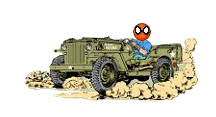

El Niņo
Experience is defined as something you get, after you need it.
Give the world the best you have. The best will come back to you...
There are no rules for good photographs, there are only good photographs.
"Thou shalt not bear false witness against thy neighbour." 9th Commandment.
"Speak not Evil of the absent for it is unjust." George Washington, Rule 89 of Civility and Decent Behavior.
Wheeling Gallery ----- E-Mail
Life Member: South Florida Jeep Club
#4

Posted 15 March 2006 - 09:37 AM
Jim B, on Mar 15 2006, 10:19 AM, said:
GL, you need to study this and conduct a training exercise on our next convoy down the beach.
Rollbar , Jim said term paper too!
JimB if i remember correctly, i left tellico 6 hours before you, and you past me in your USSJIMB RV going over 100mph , just south of atlanta!
#5

![]() Posted 15 March 2006 - 09:59 AM
Posted 15 March 2006 - 09:59 AM
Greenlantern, on Mar 15 2006, 09:37 AM, said:
You were going to slow for an SUV. Plus your vehicle looked like it was a Cuban Flotilla down I-75 with so many people in it and sparking rear bumper.
It was not a pretty sight and a bit dangerous from all the sparks.


El Niņo
Experience is defined as something you get, after you need it.
Give the world the best you have. The best will come back to you...
There are no rules for good photographs, there are only good photographs.
"Thou shalt not bear false witness against thy neighbour." 9th Commandment.
"Speak not Evil of the absent for it is unjust." George Washington, Rule 89 of Civility and Decent Behavior.
Wheeling Gallery ----- E-Mail
Life Member: South Florida Jeep Club
#6

Posted 15 March 2006 - 06:21 PM
Greenlantern, on Mar 15 2006, 09:37 AM, said:
Jim B, on Mar 15 2006, 10:19 AM, said:
GL, you need to study this and conduct a training exercise on our next convoy down the beach.
Rollbar , Jim said term paper too!
JimB if i remember correctly, i left tellico 6 hours before you, and you past me in your USSJIMB RV going over 100mph , just south of atlanta!
:sneak:
'48 Willys; '74CJ5; '80CJ7; '84 CJ8; '86 CJ7
*Who Needs A Stinking Manual When You Have A Fat Wallet For Tech Support!*
*What man is a man who does not make the world better*
Support the Central Florida Bible Camp for kids
#7

Posted 15 March 2006 - 06:22 PM
Jim B, on Mar 15 2006, 09:59 AM, said:
It was not a pretty sight and a bit dangerous from all the sparks.
Now that's funny right there. :sneak:
'48 Willys; '74CJ5; '80CJ7; '84 CJ8; '86 CJ7
*Who Needs A Stinking Manual When You Have A Fat Wallet For Tech Support!*
*What man is a man who does not make the world better*
Support the Central Florida Bible Camp for kids
#8

Posted 15 March 2006 - 06:24 PM
Greenlantern, on Mar 14 2006, 11:22 PM, said:
Green, I guess I could shorten it by removing the last period in the last sentence. :sneak:
'48 Willys; '74CJ5; '80CJ7; '84 CJ8; '86 CJ7
*Who Needs A Stinking Manual When You Have A Fat Wallet For Tech Support!*
*What man is a man who does not make the world better*
Support the Central Florida Bible Camp for kids
#9

Posted 15 March 2006 - 08:39 PM
Jim B, on Mar 15 2006, 09:59 AM, said:
Greenlantern, on Mar 15 2006, 09:37 AM, said:
You were going to slow for an SUV. Plus your vehicle looked like it was a Cuban Flotilla down I-75 with so many people in it and sparking rear bumper.
It was not a pretty sight and a bit dangerous from all the sparks.
#10

Posted 19 March 2006 - 06:11 PM
#11

![]() Posted 19 March 2006 - 07:11 PM
Posted 19 March 2006 - 07:11 PM


El Niņo
Experience is defined as something you get, after you need it.
Give the world the best you have. The best will come back to you...
There are no rules for good photographs, there are only good photographs.
"Thou shalt not bear false witness against thy neighbour." 9th Commandment.
"Speak not Evil of the absent for it is unjust." George Washington, Rule 89 of Civility and Decent Behavior.
Wheeling Gallery ----- E-Mail
Life Member: South Florida Jeep Club
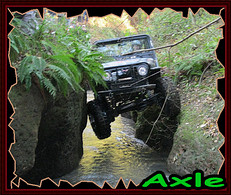
 Help
Help

